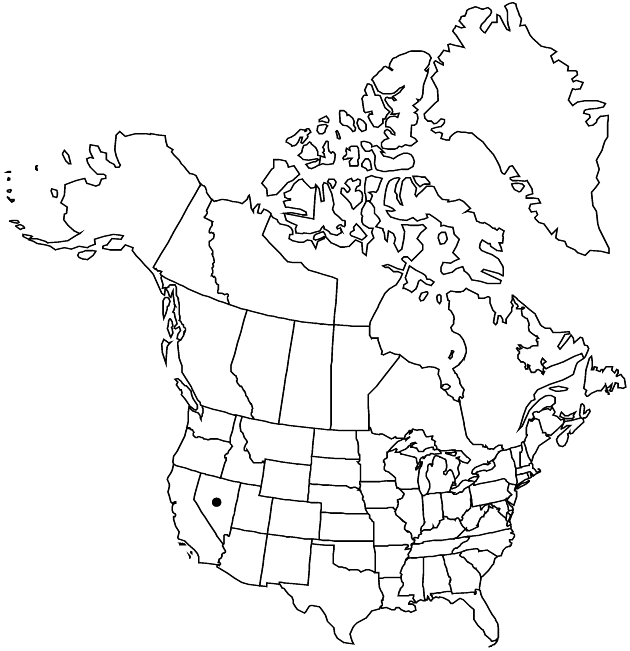Tonestus graniticus
Phytologia 68: 178. 1990.
Perennials, cespitose to ± mat-forming, 5.5–14 cm; with branched caudices surmounting well-developed taproots. Stems (clothed with marcescent leaf-bases) densely stipitate-glandular. Leaves: basal blades ovate to spatulate, 12–40 × 5–12 mm; cauline petiolate (proximal) to sessile and ± clasping (distal), blades oblong to broadly lanceolate, 4–28 × 1–8 mm, markedly reduced distally; 1-nerved or very weakly 3-nerved, margins usually irregularly dentate, rarely (basal, distal) entire, faces densely scabrous (hairs multicellular, conic), stipitate-glandular. Heads (1–) 3–7 (–11), in racemiform or apparently corymbiform arrays. Peduncles 0–15 mm (often apparently bracteolate). Involucres narrowly campanulate, 5–9 × 6–10 mm. Phyllaries 18–32, in 3–4 series, often reflexed distally, green, 1-nerved, unequal, proximally chartaceous and ± keeled, margins eciliate, faces stipitate-glandular; outer and mid ovate to oblong, 2–6 × 1–2 mm, apices obtuse to acute; inner linear to narrowly lanceolate, 4–6 × 1–2 mm, margins scarious, stipitate-glandular distally, apices acute to acuminate. Ray-florets 0. Disc-florets 13–23; corollas funnelform to ± ampliate distally, 3.5–5.5 mm, scarcely exceeding involucres, lobes erect to slightly spreading, 0.8–1 mm, 1/5–1/4 corolla length; anthers 1.6–2.1 mm; style-branch appendages lanceolate, 0.7–1.1 mm, stigmatic lines 0.6–1.1 mm. Cypselae cylindric, 1.5–3 mm, weakly 4–7-nerved, faces strigose; pappus bristles 25–35, brittle. 2n = 18.
Phenology: Flowering and fruiting mid–late summer.
Habitat: Crevices of granite outcrops
Elevation: 2400 m
Discussion
Of conservation concern.
Tonestus graniticus is known only from the Great Basin, from the east side of Lone Mountain, Esmeralda County.
Selected References
None.
